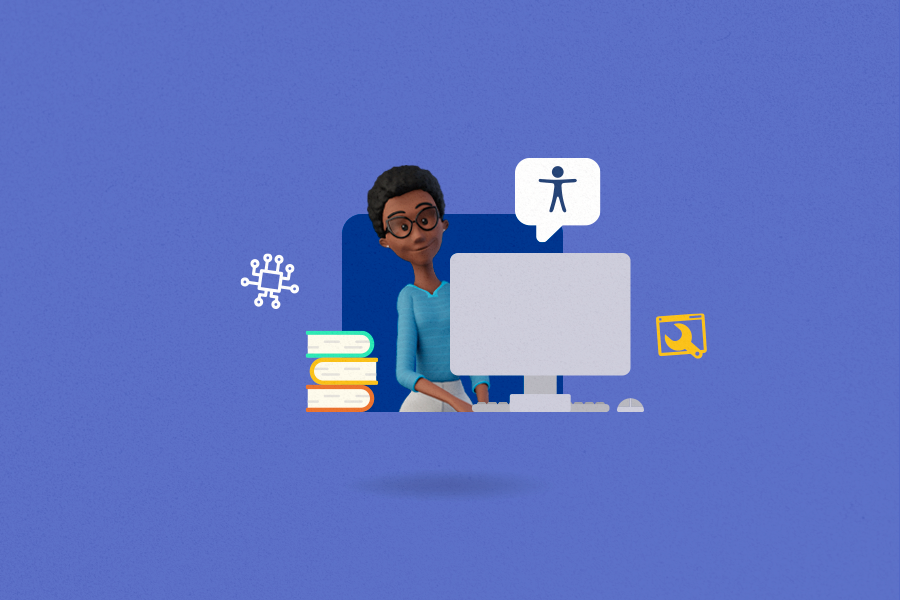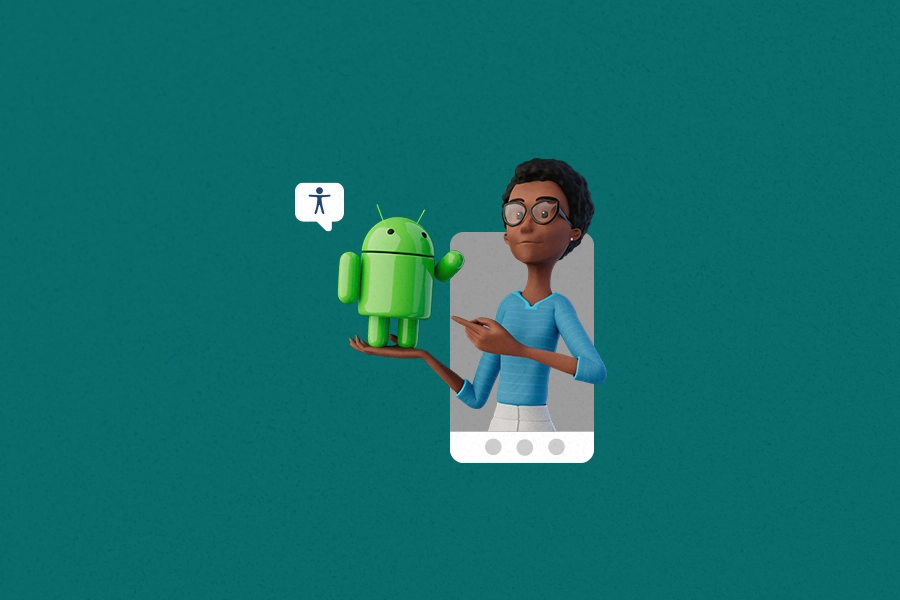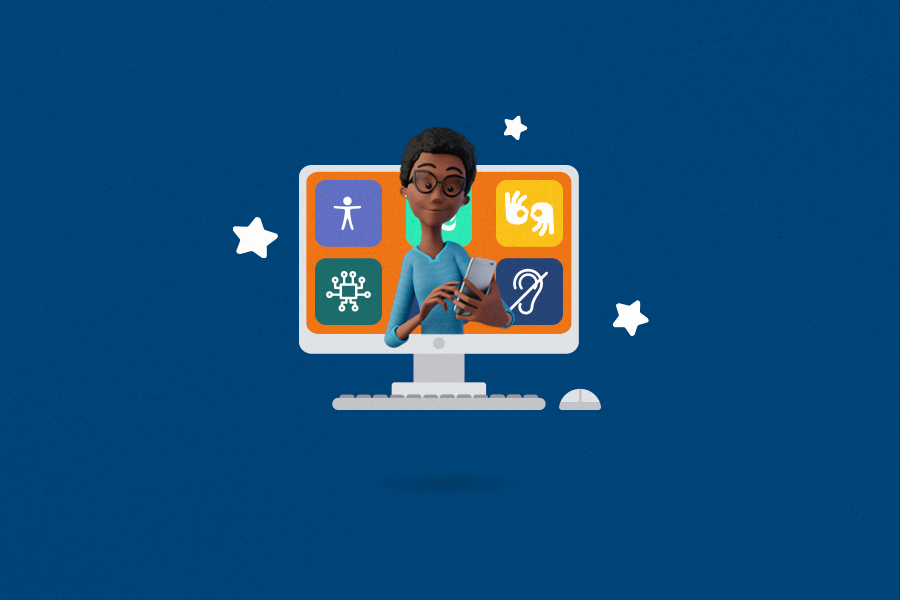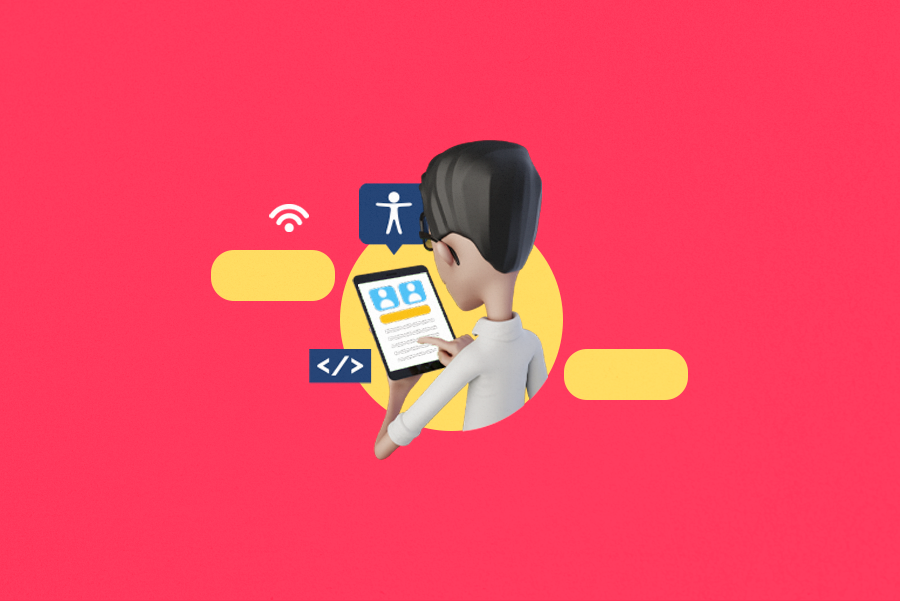
Assistive technologies: what are they and examples

According to Mary Pat Radabaugh, Director of IBM National Support Center for Persons with Disabilities in 1993, technology makes things easier for people without disabilities. For people with disabilities, technology makes things possible.
This quote remains relevant to this day, especially in a scenario in which 27% of the United States’ population lives with a disability. Assistive technologies, focused on promoting accessibility and inclusion, play a very important part for the global community with disabilities. It is about them that we will talk about today, so get your coffee cup and notepad, and let’s dive into the universe of assistive technology!
What is assistive technology?
Assistive technology can be described as a set of resources and services created with the goal of promoting more accessibility and autonomy for people with disabilities. Its aim is to make this part of the population feel more included in society and capable of performing their daily tasks in an equitable manner to people without disabilities.
Overall, assistive technology acts as an aide to amplify the abilities of those with disabilities. We can find both as softwares and technological equipment, as in medical, educational and even design services. But do not worry, we are still going to dive deeper into more examples of what an assistive technology is further along.
What does the law say about assistive technology?
This term was first used in 1988, when Congress passed The Technology Related Assistance for Individuals with Disabilities Act. This legislation increased the access, funding and availability of assistive technology for all people with disabilities. Later on, The Assistive Technology Act was amended to it.
Nowadays we also have in our favor the Individuals with Disabilities Education Act (IDEA), the Americans with Disabilities Act (ADA) and the Every Student Succeeds Act (ESSA).
What is the use of assistive technology?
Assistive technology exists to promote more inclusion, autonomy and equity for all people with disabilities. In general, its goal is to ensure a greater quality of life for these people, making it so that there are not as many barriers to performing daily and professional tasks.
It is worth mentioning that assistive technologies, aside from being essential for those who have a permanent disability, are also quite helpful for people with temporary or situational disabilities.
So you can better understand the difference between them, imagine a deaf person. They have a permanent disability. Now picture someone with an ear infection that cannot hear for a few days. This is a temporary disability. Lastly, think of someone that is in a very loud place and cannot understand anything that they are hearing. They are going through a situational disability.
What are assistive technology categories?
According to some global definitions, there are 12 categories of assistive technologies. It is really important for these categories to exist, because it is only with this level of organization that this area of knowledge can be enhanced, in terms of research, development and even public policies.
So how about we find out what are they?
- Aide for daily life: these are tools related to a person’s most basic needs, such as eating, showering, getting dressed and taking care of the house.
- Augmentative and alternative communication: technologies in this group allow for autonomous and full communication from mute people or those with speech limitations, such as vocalizers and communication boards.
- Computer accessibility resources: here we find all kinds of equipment that make it possible for people with disabilities to have access to a computer, such as modified keyboards, screen readers and voice recognition softwares, for example.
- Surrounding control systems: these systems are aimed at people with reduced mobility, so they can remotely control equipments, by turning lights on or opening doors.
- Accessibility architectural projects: these may be the most known assistive technologies, because they are more present in society’s daily activities. They are made up of renovations and structural adaptations, building ramps and adapting restrooms, for instance, to reduce physical barriers and facilitate locomotion.
- Orthoses and prostheses: they are an orthopedic resource, able to adjust or replace body parts with artificial members, helping with locomotion.
- Postural adequacy: all products and equipment that aim at ensuring comfort for people who need to spend most of their time sitting or lying down, such as anatomical backrests for wheelchairs and positioners that provide greater stability.
- Mobility aids: we have already talked a little about wheelchairs, but it is in this category that they belong. Aside from them, we have walkers, scooters and every other kind of vehicle that helps with mobility for the person with disabilities.
- Aids for blind people or those with visual disabilities: these resources include magnifying glasses, Braille equipment, screen readers and even service animals trained to support the person with a disability in their daily life.
- Aids for deaf people or those with hearing disabilities: here we find many different equipment, such as cochlear implants, visual alerting systems, telephones with a keyboard and also Sign Language translators.
- Vehicle adaptations: all accessories and adaptations that make it possible for the person with disabilities to access and drive vehicles, like wheelchair ramps and pedal arrangements.
- Sports and leisure: here are all resources and services that contribute to more accessibility in recreational and sports activities, such as balls that make sounds for people with visual disabilities.
What are the examples of assistive technology?
We have already mentioned some examples above, inside each assistive technology category, but let’s dive deeper into this universe!
Screen readers and image amplifiers
These are softwares focused on people with visual disabilities and/or low vision. Screen readers are responsible for translating all written content on the screen into voice, including images, as long as they have an alternative description. Meanwhile, image amplifiers are related to web pages’ zoom in and zoom out tools.
Hand Talk
Hand Talk is the largest Sign Language translation platform in the world. It offers two assistive technology solutions: the Hand Talk App and the Hand Talk Plugin. With the help of 3D virtual translators Hugo and Maya and Artificial Intelligence, the first performs translation from English to ASL (American Sign Language) and from Portuguese to Libras (Brazilian Sign Language), working as a pocket translator. Meanwhile, the second translates all written content in websites from Portuguese to Libras, and will soon be available from English to ASL!
Be My Eyes
Be My Eyes is a platform that connects people with visual disabilities with people who can see. So they can “lend their eyes” to help out with daily tasks, such as checking the expiration date on a product or the color of an outfit at a store.
Electronic cane
These canes are more technological than most, being able to alert the person if they are approaching an obstacle on their path, like a tree in the middle of the street, or a chair at an office. They work by emitting sound or vibrating alerts, helping the person with a visual disability to walk around more independently.
Robotic legs
Inside the prostheses category, they help people with physical disabilities to walk around more freely and autonomously, even helping them in sports practices.
Stand table
Stand tables work as supports for people with physical disabilities or reduced mobility to walk standing up, improving their blood circulation and decreasing leg swelling, often caused by long hours sitting in a wheelchair.
Why is it important to invest in assistive technologies?
It is essential that we keep promoting the inclusion of people with disabilities in society with autonomy, and assistive technologies are great allies in this mission! With more investments, comes the possibility to develop and build new products and tools more focused on the pains and needs of people with disabilities.
Oh, but do not forget that it is also very important to rely on people with disabilities themselves in this process, alongside expert professionals in technology and accessibility.
How can your company implement assistive technologies?
There is still a long way to go in regards to implementing assistive technologies in the workplace. But not all is lost! There are many actions, from the simplest to the most complex ones, that you can start implementing in your organization to ensure more accessibility for your staff and clients. Check out some ideas!
- Adapted spaces, such as hallways, restrooms and stairs;
- Ergonomically adapted furniture;
- Light signalization;
- Access ramps;
- Tactile floors;
- Braille signalization;
- ASL interpreters and ASL website translators;
- Adapted computers;
- Reading softwares;
- Adapted phones.
Conclusion
Implementing assistive technologies in your business, aside from being part of the law, is also a strategic investment. So start now learning more about them, understanding what makes sense for your company the most. A tip for a great first step in this accessibility journey is to count on the Hand Talk Plugin in your website. Talk to Hand Talk specialists to learn more!


